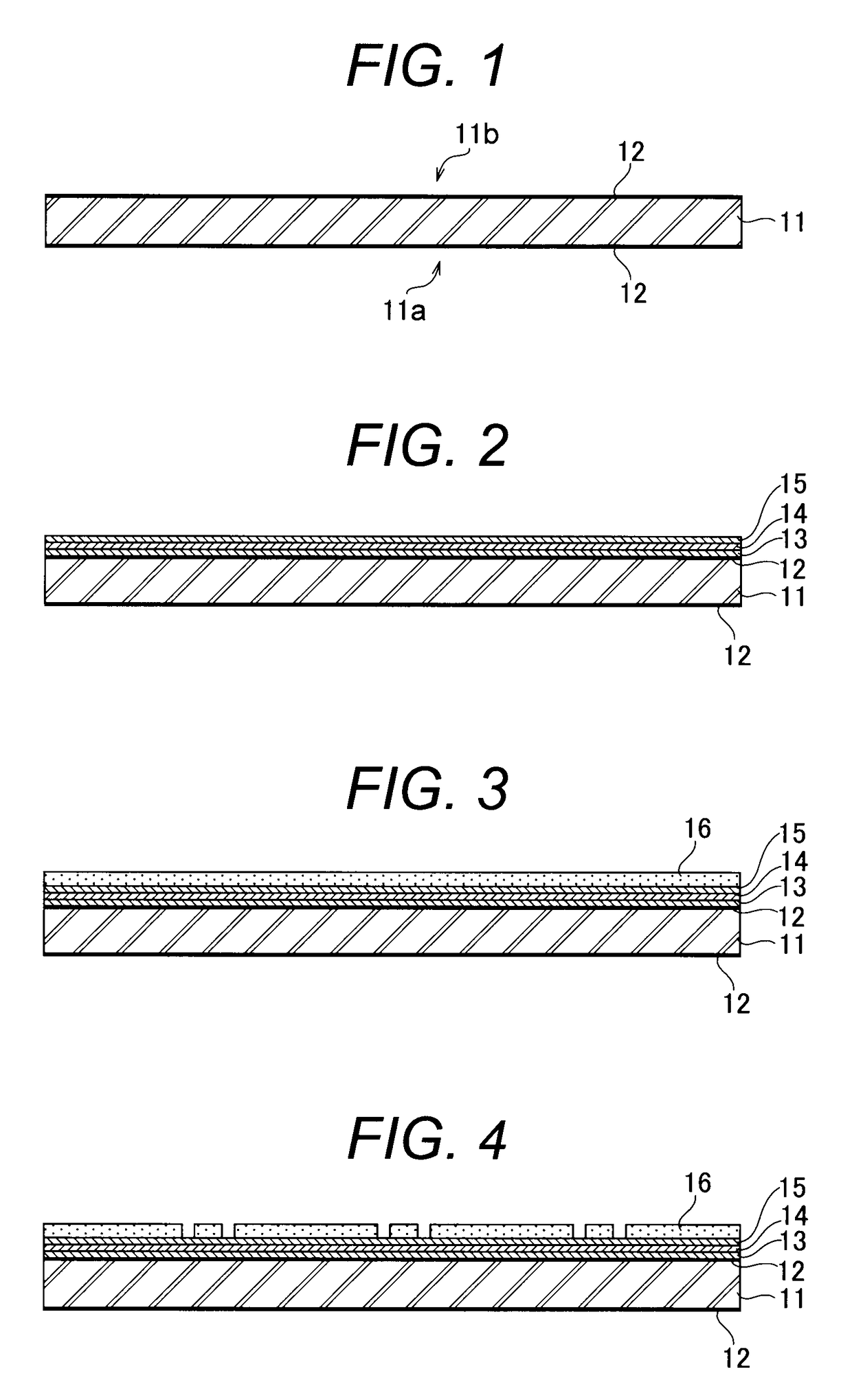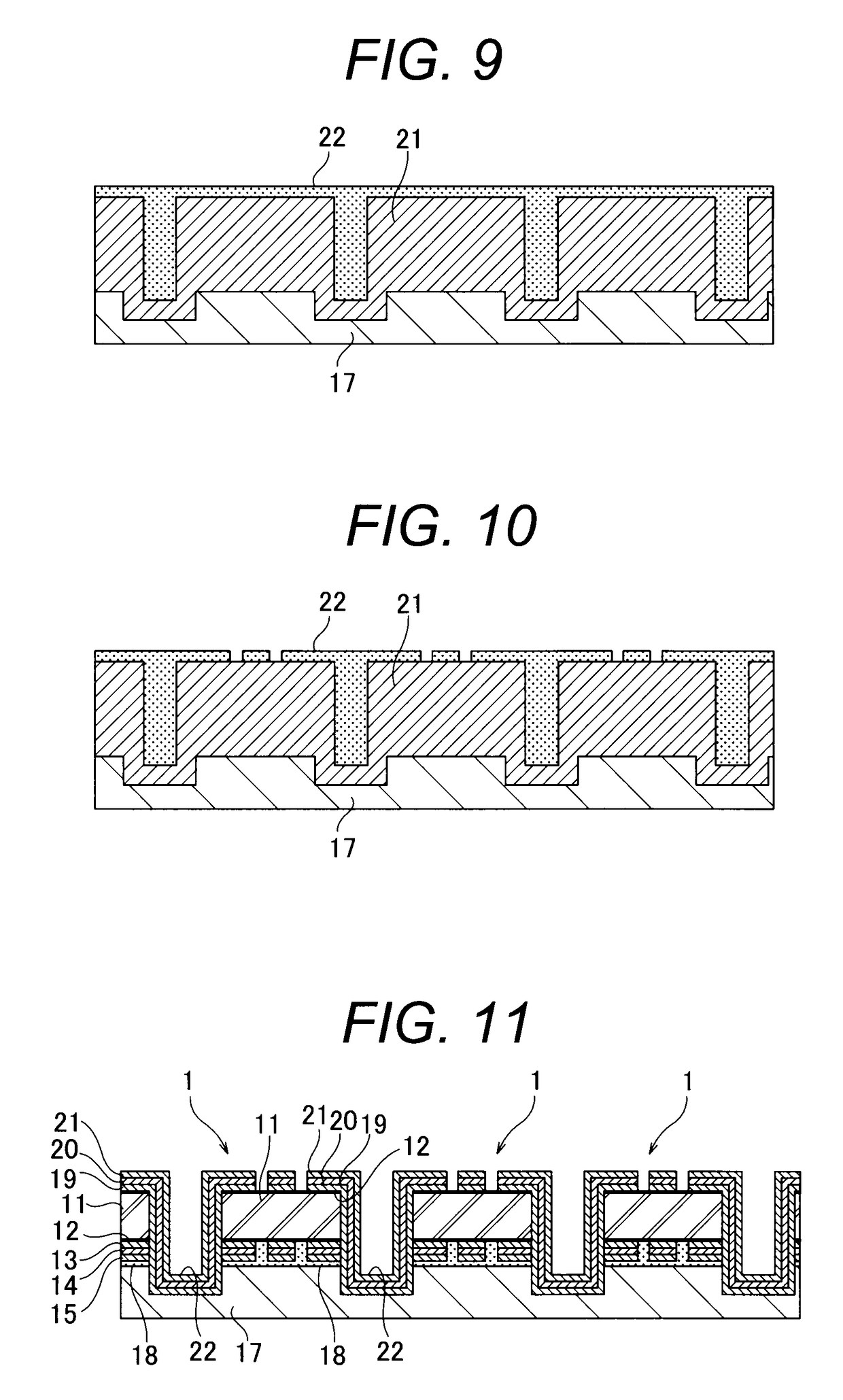Method for manufacturing electronic components
a manufacturing method and electronic component technology, applied in the field of electronic components, can solve the problems of difficult to be used for electronic component products, limited application materials, and high cost of materials, and achieve the effect of high-reliability terminal electrode accuracy and efficiency
- Summary
- Abstract
- Description
- Claims
- Application Information
AI Technical Summary
Benefits of technology
Problems solved by technology
Method used
Image
Examples
Embodiment Construction
[0069]FIG. 1 to FIG. 13 sequentially shows the steps of a method for manufacturing an electronic component according to an embodiment of the present invention. The method for manufacturing an electronic component according to the embodiment is based on the premise of providing a chip component 1 having a rectangular parallelepiped (hexahedronal) overall shape as shown in FIG. 15, for example, with an aggregate of four terminal electrodes 5 corresponding to four peripheral surfaces 4a, 4a, 4b, and 4b so that each terminal electrode 5 has a U-shaped cross section (a U shape) that extends from a top surface 2 to the peripheral surface 4 (a side surface 4a or an end surface 4b) and to a bottom surface 3. As described previously, the number, the shape, and layout positions of the terminal electrodes 5 may apply various other aspects and it is therefore needless to say that the present invention will not be limited only to the illustrated example.
[0070]As shown in FIG. 1, a substrate 11 i...
PUM
| Property | Measurement | Unit |
|---|---|---|
| temperature | aaaaa | aaaaa |
| temperature | aaaaa | aaaaa |
| thickness | aaaaa | aaaaa |
Abstract
Description
Claims
Application Information
 Login to View More
Login to View More - R&D
- Intellectual Property
- Life Sciences
- Materials
- Tech Scout
- Unparalleled Data Quality
- Higher Quality Content
- 60% Fewer Hallucinations
Browse by: Latest US Patents, China's latest patents, Technical Efficacy Thesaurus, Application Domain, Technology Topic, Popular Technical Reports.
© 2025 PatSnap. All rights reserved.Legal|Privacy policy|Modern Slavery Act Transparency Statement|Sitemap|About US| Contact US: help@patsnap.com



